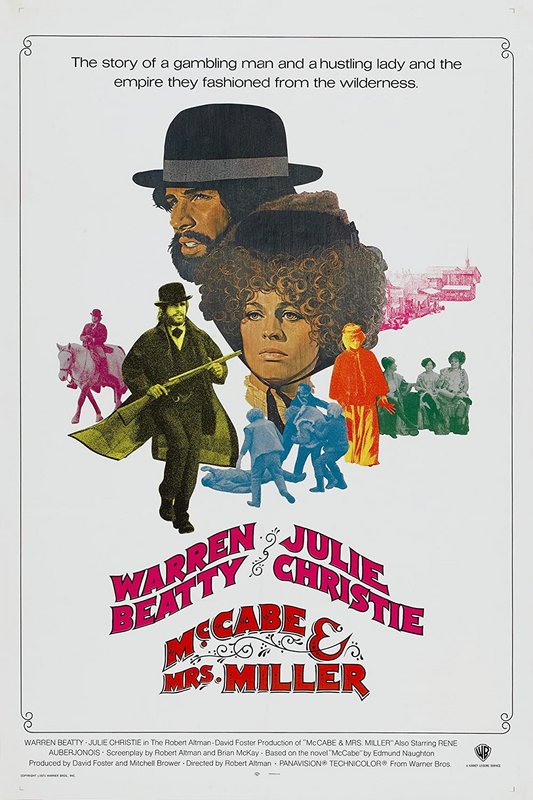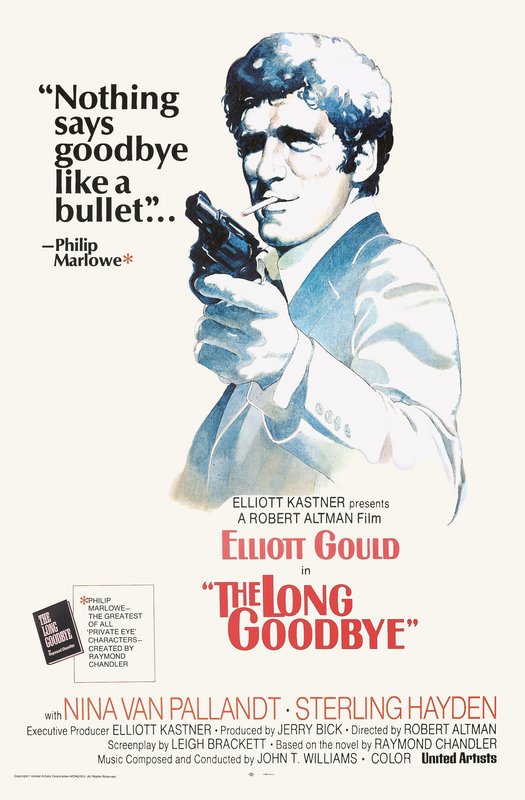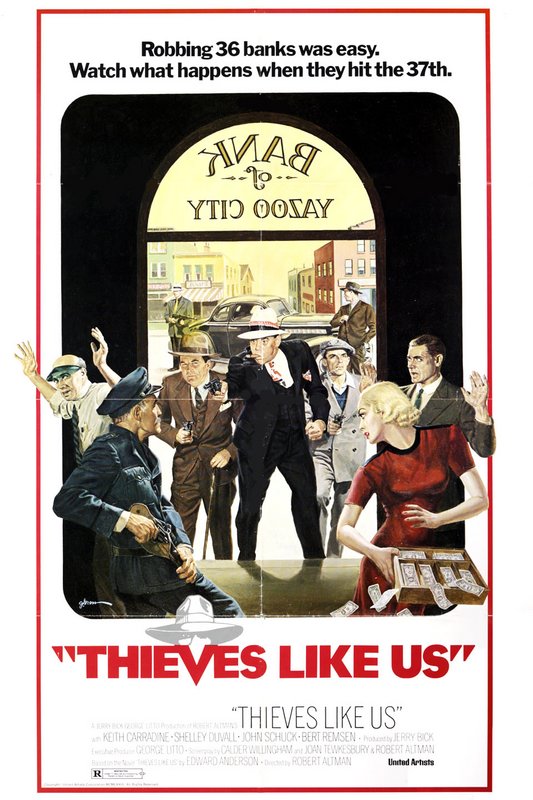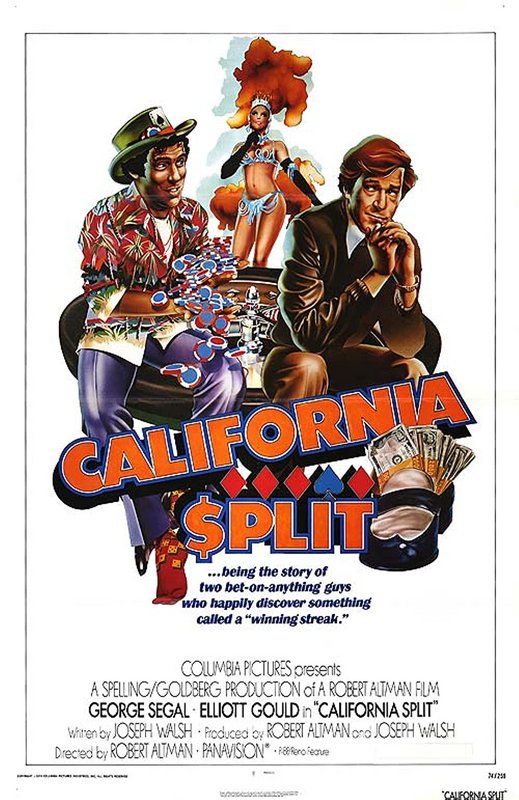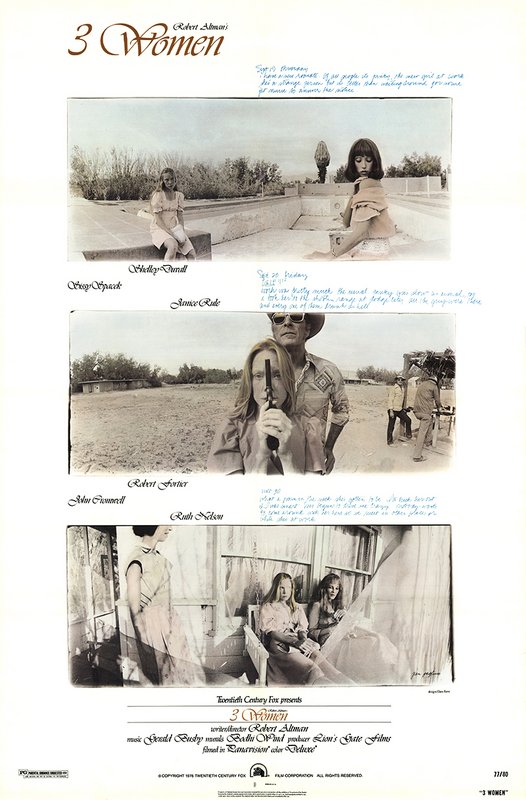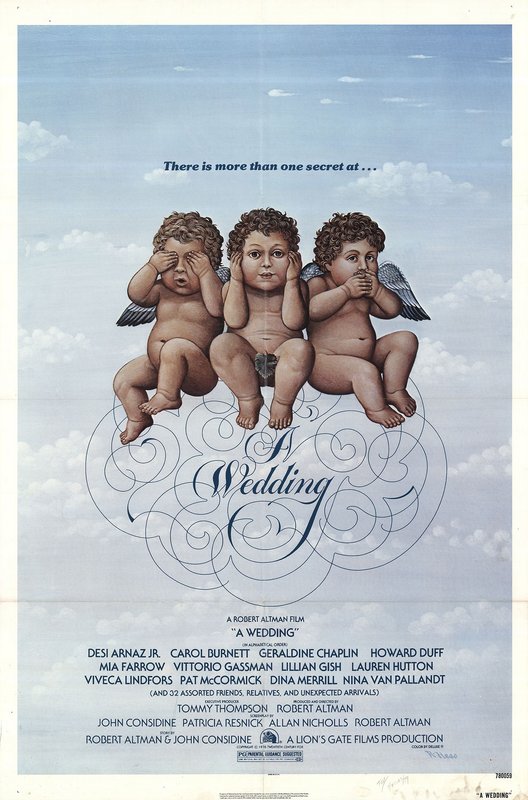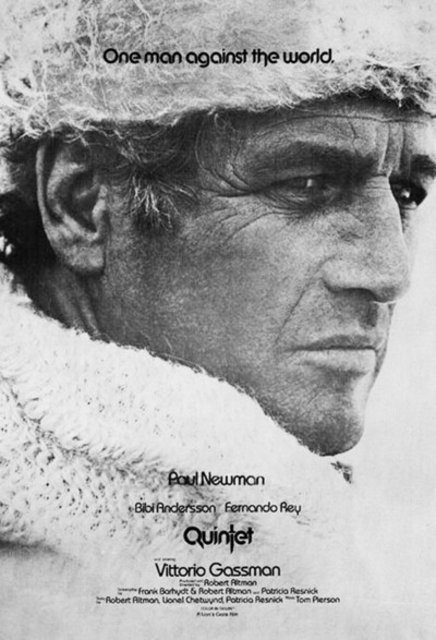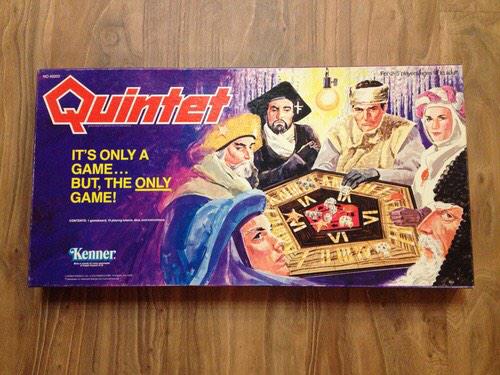
Images - 1972
Directed by Robert Altman
Written by Robert Altman & Susannah York
Starring Susannah York, René Auberjonois, Marcel Bozzuffi, Cathryn Harrison
Hugh Millais & John Morley
Robert Altman had already touched on the theme of madness in
That Cold Day in the Park when
Images came along, but his thought processes and preparation for the latter went back as far as the mid-60s. With the likes of
Persona,
Psycho and
Repulsion all being artistic triumphs in that decade, it stands to reason a filmmaker interested in exploring every theme and genre he could would want to see where this took him. What he ended up with was an extraordinary film buried by the sands of time - and while it was never one that would be universally accepted by all, it deserves consideration at least. If one is the least bit interested, they owe it to themselves to seek it out and decide for themselves. This is a psychological horror film that succeeds completely in putting you into the mind of it's central character, and unleashes hell - unrelenting, claustrophobic, tension-filled and lurking in every crevice. As per usual for this filmmaker, decisions that were especially adroit and enhanced this film were made on the fly, suggested by whomever had that moment of inspiration then and there.
Cathryn (Susannah York), a writer of children's fiction, waits alone at home for husband Hugh (Rene Auberjonois) to return from work. A friend calls, but it's not long before her friend's voice is interrupted by a stranger who makes disturbing implications about Hugh - and this stranger calls again, and again. When Hugh gets home, Cathryn has a moment when her husband turns into a completely different person. Obviously, Cathryn is very sick. The two decide to retire for relaxation to their country cottage, where Cathryn keeps on spotting herself in the distance - and keeps on having mental lapses, to Hugh's consternation. Soon Cathryn is being visited by an ex-lover who is long dead, Rene (Marcel Bozzuffi), and when Marcel (Hugh Millais) and his daughter Susannah (Cathryn Harrison) come to visit real people begin to take on the visage of others. There's no telling who is really there, and who each person who
is there really is. Cathryn can only live with this fear for so long, and she begins killing the people she's convinced aren't really there. At least, she'd better hope they're not really there.
We get into Cathryn's head in a number of ways. First of all, we hear her recite the book she's writing in her mind - "In Search of Unicorns", a children's fantasy that Susannah York wrote in real life. When Altman found out about this proclivity of York's, he suggested it be used in the film, and the end result is why you see her credited as one of the screenwriters. The hypnotic recitation she gives furthers the mood of the film - strange passages beyond our grasp float by, and it's hard to not feel a little creeped out by the way she softly speaks each passage, almost in a dreamy haze, but also as if she's enacting some kind of mystic spell. We hear her speak of strange creatures and a heroine often in peril, and the danger bleeds through into the story. This reading of her book comes and goes, often in the background and seemingly representing her thoughts when she's alone - it automatically puts me into Cathryn's mind, and since we see everything from her perspective that's where we stay for the film's entirety.
Another aspect of the film which underlines it's psychological tone, and does so in a brilliant manner, is John Williams' score. I can't emphasise enough how incredible this score is - and while it might be hyperbole to claim that this or that score is among the best I've ever heard, I can easily say with confidence that it sits within my top 100 film scores of all time. Freaky, discordant, atonal, frightening and fascinating, it's something that seems to take various musical instruments into unhappy places and misuse. We initially hear simple, easy piano melodies, but as we descend with Cathryn into madness strings, drums and all manner of sources cry out and pound in extreme and uneasy wailing. Added to it are sounds specifically made by Japanese percussionist Stomu Yamashta for Williams to add to the music - they consist of things like strange screams, and haunting instrumental wails. Williams was nominated for an Oscar - it would be only the third Oscar ceremony he'd go to being nominated for at least one, and he'd already won one for the
Fiddler on the Roof score, one of five he's managed to win in his illustrious career. (The Oscar, strangely, went to 1952 Charlie Chaplin film
Limelight - it had waited 20 years for release in the United States. Since Chaplin was credited as one of the composers, this represents Chaplin's only Oscar win.)
Adding to the sonic is the visual, and for
Images Altman had cinematographer Vilmos Zsigmond return to work for him again after
McCabe & Mrs. Miller - once again making use of rapid movement and rapid zooms to convey shock and surprise. Altman was not stepping back at all from his desire to use the zoom function more than other filmmakers. There are some especially haunting shots, such as one where Cathryn spots a vision of herself down at her country estate while standing on a distant hilltop, and then in reverse we switch to Cathryn heading inside while we see a vision of Cathryn still standing on that same hill in the distance - she's seemingly split in two - though this isn't the first time she hallucinates. The Irish countryside, where this was filmed, was made great use of in it's verdant greens, but when the camera focuses on Susannah York it can be at angles that suggest the off-center nature of her fractured mind. It's a virtuoso piece of work that managed to snag Zsigmond a nomination for a BAFTA for Best Cinematography in 1973, in conjunction with his great work on
Deliverance and
McCabe & Mrs. Miller.
Aided by excellence in sound and behind the camera, Susannah York stepped up in a difficult role, and she ended up winning Best Actress at Cannes when the film premiered there. Returning from
M*A*S*H,
Brewster McCloud and
McCabe & Mrs. Miller was René Auberjonois, playing Hugh, Cathryn's wife. A role that wasn't as challenging. Also returning from
McCabe & Mrs. Miller was Hugh Millais in a more testing role that he seems to have done with ease, despite not really being an actor before appearing in these two Altman films. Cathryn Harrison debuted, and Marcel Bozzuffi plays his part without ease due to the fact that he wasn't a fluent speaker of English. The supporting roles don't matter too much though, as this film is rigidly focused on Cathryn, her relationships, and her hallucinations which increase in frequency as the film goes on. We're never absolutely sure if what we're seeing is real or not - even a dog, presumably long gone, surprises and scares Cathryn by showing up. Something might not be there at all, but at the same time it might be there and simply taking on a different form.
Images is one of the great mood films - with only a rough screenplay, Altman once again encouraged the actors and crew to add their own ideas and direction to it while it was being made. His enjoyment of filmmaking seems to have been a desire to experiment with the ways they can be enhanced by this cooperative approach, and once again he created a spellbinding motion picture - albeit one with limited appeal. It was this difficulty in even imagining what it's audience might be that led to the film being very quietly released in few places - which is a pity. It left
Images a film to slowly find an audience when other avenues were available to see it, and an underseen Robert Altman gem from his 1970s period of explosive creativity and amazing filmmaking skill and invention. It's mood is reminiscent of his 1969 film
That Cold Day in the Park, which also had a tighter focus on one woman and her perspective. It's a film made with complete artistic integrity, for it's immediately obvious that it's mainstream commercial appeal is limited, and that this is really a thinking person's cinematic odyssey. To say that it's flown under the radar is an understatement.
Graeme Clifford, 2nd unit director and assistant to Altman on
That Cold Day in the Park and
McCabe & Mrs. Miller is credited as editor, and his input into the making of
Images was a large step-up in his career. He'd end up editing a film with a very similar vibe - 1973 Nicolas Roeg film
Don't Look Now, before moving on to
The Rocky Horror Picture Show and
The Man Who Fell to Earth. He became a fully-fledged director himself when he made 1982 film
Frances. On the production design side of matters, long-time stalwart Leon Ericksen once again helped Altman transform is ideas into reality, and played a large part in this phase of Altman's career.
Images ended up being nominated for Best English-Language Foreign Film at the Golden Globes and Altman himself received a Writers Guild of America nomination for the screenplay, even though it was loosely followed, and improved upon by many outside contributors. The reviews it received were mostly positive, but none of them had the stamp of approval that the likes of
McCabe and Mrs. Miller got from Pauline Kael.
I think that
Images is the kind of film you need to see several times to get the most out of. The pace and mood take a little getting used to, and we're thrown in at the deep end almost immediately, almost before we're ready and have adjusted ourselves to Cathryn's reality. You also have to be prepared for never being really comfortable - as far as Cathryn's break with reality is concerned, this film is relentless. From her phone interruptions at the start to her killing spree in the film's last act, you feel the tension she carries around with her to a large degree. Even her laughter seems laced with tightness and strain. Cathryn is surrounded by characters who don't really seem to care enough to see how much she's suffering. Even though she has several moments that point to her condition, they all seem to be brushed off by Hugh and forgotten. That lack of adequate caring increases the feeling of isolation and fear which she transmits so well to the audience. In this respect,
Images really is a horror film that burrows under your skin in this fashion.
All up, with this film's score, cinematography by Zsigmond, sound, acting from York and direction from Altman you get a first-rate, psychologically-pounding film which seeps with tension-filled disorientation. When you consider this film in comparison with others of it's era, it sits right next to the likes of
Don't Look Now,
Repulsion and
Persona with an elemental richness that's hard to fault, no matter how hard you look at it. Everything works in this, as long as you're not expecting a narrative journey with twists and turns, and instead tune into a feature that will creep on your nerves and perhaps lead to an unexpected nightmare or two. For me, it's up there as one of those Altman films like
That Cold Day in the Park which just passed by unnoticed, but which I rate as something quite special made by a fearless filmmaker who wasn't going to bend to the mainstream despite his newfound success. If you decide not to watch the film, I still advise you to look up that film score and listen to it. Such a strange and wonderful accompaniment to this film. Strange and wonderful all up, this film is. A forgotten Altman classic.
